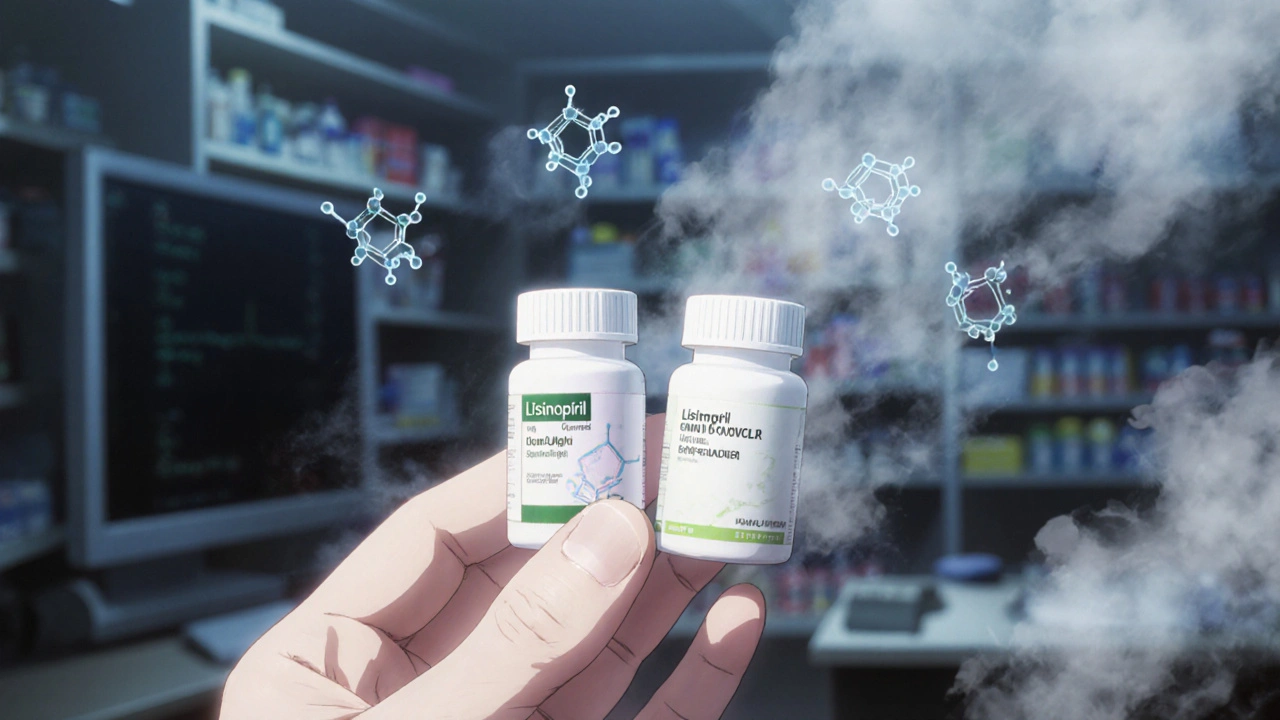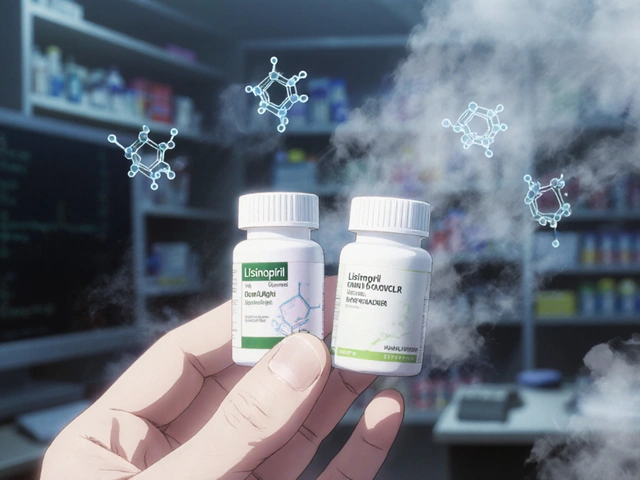When you pick up a prescription, you might see a box labeled with a familiar name like lisinopril instead of Prinivil or Zestril. That’s a generic drug. And if you’re like most people, you probably feel relieved you’re saving money. But then a whisper creeps in: Is it really the same? Is it safe? Will it work?
The truth? Most of the fear around generic drugs is built on myths - not science. The reality is far simpler: if your doctor prescribes a generic, it’s because it’s been tested, approved, and proven to work just like the brand-name version. But not all stories are the same. Some people report differences. Some doctors hesitate. And yes, there are rare cases where switching matters. Let’s cut through the noise.
What Exactly Makes a Drug "Generic"?
A generic drug isn’t a copy. It’s not a knockoff. It’s the exact same medicine, chemically speaking. The FDA requires that every generic drug contain the same active ingredient, in the same strength, and delivered the same way - whether it’s a pill, injection, or inhaler. That means if your brand-name drug has 10 mg of lisinopril, the generic has 10 mg of lisinopril. No more, no less.
The only differences? The color, shape, flavor, or filler ingredients - the stuff that doesn’t treat your condition. These inactive ingredients might change the pill’s appearance or how quickly it dissolves in your stomach. For most people, this doesn’t matter. But for a small group - like those with rare allergies to dyes or lactose - it can.
The real test? Bioequivalence. Before a generic hits the shelf, it must prove it behaves the same way in your body as the brand. That means the amount of drug absorbed into your bloodstream (called AUC) and the peak level it reaches (Cmax) must fall within 80% to 125% of the brand’s numbers. That’s not a guess. It’s a strict, statistically validated range backed by clinical trials on healthy volunteers.
In 2022, the FDA approved over 1,000 generic drugs. Nearly 99% of them passed bioequivalence testing. And here’s the kicker: the same factories that make brand-name drugs often make the generics. The FDA inspects them all using the same rules. In fact, 98.7% of generic manufacturing sites passed inspection in 2022 - slightly higher than brand-name sites.
Myth: Generics Are Less Effective
"I switched to generic metformin and my blood sugar went crazy." That’s a story you’ll hear. And it’s real - for some people. But it’s not because the generic is weaker. It’s because switching medications - even to something identical - can disrupt your body’s rhythm.
Large studies tell a different story. A 2020 analysis in Nature looked at 17 cardiovascular drugs. It found that patients on generics had fewer heart attacks and deaths than those on brand-name versions. For metformin and gliclazide, the benefit was clear. Another study of over 136,000 older adults found a spike in ER visits after switching to generic blood pressure meds - but that was in the first month. After three months, the numbers evened out.
Why the initial spike? It’s likely not the drug. It’s the transition. When your pharmacy switches your medication without telling you, you might panic. You might stop taking it. You might assume it’s not working and skip doses. That’s human behavior - not drug failure.
For the vast majority of drugs - antibiotics, statins, antidepressants, diabetes pills - generics perform just as well. In a Consumer Reports survey of 1,200 users, 82% said they noticed no difference in effectiveness. Only 7% reported a noticeable change.
Myth: Generics Are Unsafe
"My friend had seizures after switching to generic Keppra." That’s terrifying. And it’s rare - but it happened.
There are drugs where even tiny changes in blood levels can cause big problems. These are called narrow therapeutic index (NTID) drugs. Examples: warfarin (blood thinner), levothyroxine (thyroid), phenytoin (seizure), and levetiracetam (Keppra). For these, the FDA requires tighter bioequivalence standards: 90% to 112% instead of 80%-125%.
Even so, most patients switch without issue. But a 2022 study in Epilepsia found that people switching from brand to generic levetiracetam had a 23% higher chance of having another seizure. That’s not because generics are unsafe. It’s because these drugs leave no room for error. Your body is finely tuned to a specific level. A slightly different dissolution rate - even within FDA limits - can push you out of the safe zone.
That’s why doctors often recommend staying on the same manufacturer’s version of an NTID drug. If you’re stable on a brand, keep it. If you’re stable on a generic, don’t switch unless you have to. The FDA says: when in doubt, consistency matters more than cost.
And yes - there have been documented cases where a generic failed. One patient’s UTI didn’t clear up on generic ciprofloxacin but improved after switching back to the brand. Another’s pneumonia didn’t respond until they went back to brand levofloxacin. These are outliers. But they’re real. And they remind us: medicine isn’t always one-size-fits-all.

Why Do Some People Feel Different on Generics?
It’s not all in your head. But it’s not always the drug, either.
Some people are sensitive to inactive ingredients. A dye, a preservative, or even a different type of starch can cause bloating, headaches, or rashes. If you’ve noticed a reaction after switching, check the label. The FDA doesn’t require generic manufacturers to list all inactive ingredients as clearly as brand companies do. Only 67% of generic labels include full details - compared to 99% for brands.
Another factor? Expectation bias. If you believe generics are inferior, your brain might interpret normal side effects - like a headache or fatigue - as proof it’s not working. A 2024 study analyzing 2,450 patients found that 75% had positive perceptions of generics. But women were more likely to express concern - not because they had worse outcomes, but because they were more likely to notice and report subtle changes.
And then there’s the placebo effect - but in reverse. If you expect a drug to fail, your body might respond as if it has. This isn’t weakness. It’s how the human brain works.
When Should You Stick With Brand?
You don’t need to choose between safety and savings. But you do need to be smart.
Stick with brand-name if:
- You’re on a narrow therapeutic index drug (warfarin, levothyroxine, phenytoin, levetiracetam)
- You’ve had a bad reaction after switching before
- Your doctor specifically says not to switch
- You’re stable on the brand and can afford it
Switch to generic if:
- You’re on a common drug like atorvastatin, metformin, or sertraline
- You’ve never had issues with generics before
- You’re trying to cut costs
- Your insurance requires it
And if you do switch? Monitor yourself. Keep a log: sleep, energy, mood, symptoms. Check in with your doctor after 4-6 weeks. Blood tests for thyroid, kidney, or drug levels can confirm everything’s on track.

What Happens When You Can’t Afford the Brand?
Let’s be real: 90% of prescriptions in the U.S. are filled with generics. Why? Because they save patients and the system billions. Between 2010 and 2020, generics saved the U.S. healthcare system $2.29 trillion. That’s not a statistic - that’s someone’s ability to afford insulin, blood pressure meds, or antidepressants.
For many, the choice isn’t between brand and generic. It’s between taking the drug or skipping it. And skipping it? That’s far riskier than any theoretical difference in a generic pill.
Hospitals use generics for 98% of their medications. Insurance companies push them because they work. And if you’re on Medicare or Medicaid, you’re likely already on generics - because they’re the standard.
Don’t let fear keep you from taking your medicine. If you can’t afford the brand, the generic is your best option. And if you’re worried? Talk to your pharmacist. Ask: "Is this generic approved for my condition?" They can check the FDA’s Orange Book and tell you if there are any known issues.
What About the Future?
Generics aren’t going anywhere. In fact, they’re getting smarter. The FDA is now tracking complex generics - things like inhalers, creams, and injectables - that are harder to copy. By 2027, experts predict 93.5% of all prescriptions will be generics.
But here’s the catch: 78% of the active ingredients in these drugs come from China and India. That’s not a secret. It’s just how the global supply chain works. The FDA inspects these facilities - and most pass. But if a factory fails, it can cause shortages. That’s a system problem, not a drug problem.
For now, the message is simple: generics are safe, effective, and essential. They’re not perfect. But they’re not dangerous. And for most people, they’re the smartest choice.
Are generic drugs as safe as brand-name drugs?
Yes. The FDA requires generic drugs to meet the same strict standards for quality, strength, purity, and potency as brand-name drugs. They’re made in the same type of facilities, inspected using the same rules, and tested to prove they work the same way in your body. Over 99% of approved generics meet or exceed these standards.
Can generic drugs cause different side effects?
Sometimes - but not because the active ingredient is different. Side effects can come from inactive ingredients like dyes, fillers, or preservatives. If you have allergies or sensitivities, check the label. Also, switching from brand to generic can cause temporary adjustments in how your body responds - especially with drugs like thyroid or seizure meds. If you notice new or worsening side effects, talk to your doctor.
Which drugs should I avoid switching to generic?
Avoid switching if you’re taking a narrow therapeutic index (NTID) drug - where small changes in blood levels can cause serious problems. These include warfarin, levothyroxine, phenytoin, and levetiracetam. Even if the generic is FDA-approved, your doctor may recommend staying on the same version you’ve been using. Always ask your pharmacist or provider if your drug is an NTID.
Why do some people say generics don’t work for them?
In rare cases, a patient might experience a change in effectiveness due to slight differences in how the drug dissolves or is absorbed - especially with NTID drugs. But more often, it’s because of expectation bias, missed doses during the switch, or unrelated changes in health. A 2024 study found that 75% of people had positive experiences with generics. If you feel different after switching, track your symptoms and get a blood test if needed.
Is it okay to switch between different generic brands?
For most drugs, yes. But for NTID drugs, it’s better to stick with one manufacturer. Different generic makers may use slightly different processes, which can affect how the drug behaves in your body. If you’re on a drug like levothyroxine or warfarin, ask your pharmacist to keep you on the same generic brand. If you’re switched without warning, tell your doctor - you might need a blood test to check your levels.
Do insurance companies force you to use generics?
Yes - and for good reason. Generics cost 80-85% less than brand-name drugs. Most insurance plans require you to try the generic first. If it doesn’t work for you, your doctor can request a brand-name exception. But in most cases, generics work just as well. Don’t assume you need the brand unless your doctor says so.
If you’re on a chronic medication and thinking about switching to a generic - do it. But stay aware. Know your drug. Talk to your pharmacist. Track how you feel. And if something doesn’t feel right - don’t ignore it. You know your body best. But don’t let fear stop you from taking the medicine you need. Generics aren’t a compromise. They’re a smart, safe, and proven choice for millions.

